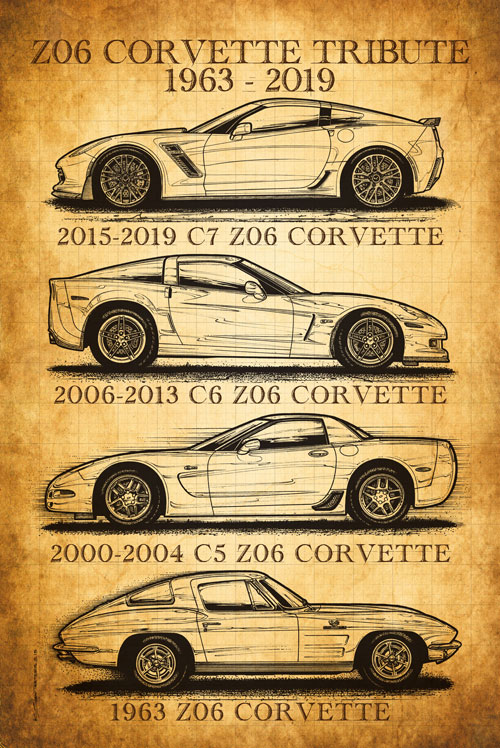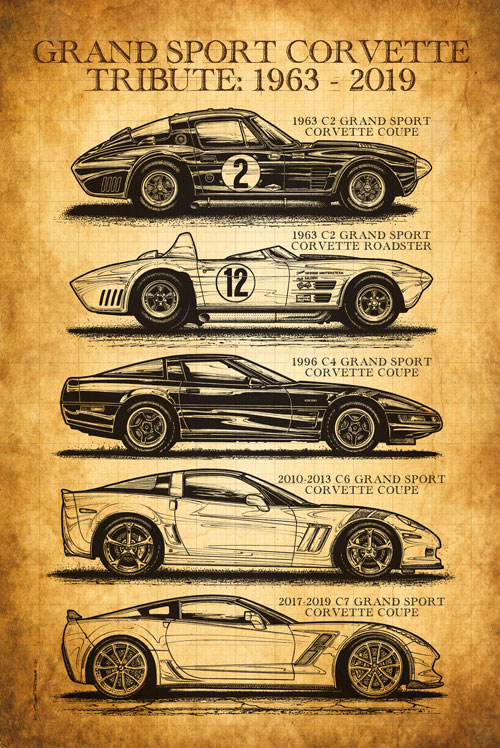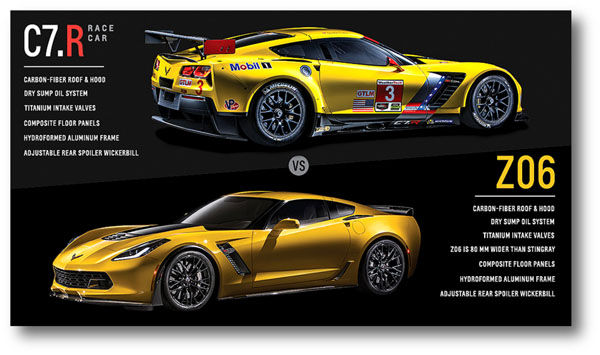Dateline: 5.2.22 Graphics & Illustrations by K. Scott Teeters, Photos GM Archives, this story was first published in the April 2017 issue of Vette Vues Magazine – Update – The C8 Z06 has been all over the Corvette community, as it should be. Clearly, the car is a vast improvement over the C7 Z06. At the April 29, 2022 Corvette Bash event at the National Corvette Museum, Corvette Product Planner, Harlan Charles made it perfectly clear when he said, “The C8 Z06 is a race car that you can drive on the street.”
Back in 1988-1989 Chevrolet sold Corvette Challenge race cars that “could” be registered for street use, but no one really wanted to. Then back in 1968-1968 427 L88 Corvettes “could” be registered for street use, but Duntov made sure the L88 had bad manners for the street. Despite Zora’s efforts, a few L88 were driven as street Corvettes.
Fast forward to the C5, C6, and C7 Z06 Corvettes, these cars were near track-ready, and mostly street Corvettes with livable manners, depending on how they were driven. Thanks to Chevrolet’s backing of the Corvette Racing Team, Pratt & Miller became Corvette Engineering’s defacto Racing Engineering Department. Consequently, C6 and C7 Corvettes and Z06 Corvettes has more race car built into their designs than ever, with each new iteration building upon the previous design.
The mid-engine C8 Z06 and Z06/Z07 Corvettes are a quantum leap in race car engineering, poured into what Harlan Charles accurately described as “… a race car you can drive on the street.” In the early days of the early 1960s, exotic European cars, such as Ferrari, Bizzarrini, Iso-Griffo, Aston Martin, Porsche, Jaguar, and a few others, owned the landscape of sports racing cars and GT cars. These cars were racing cars built for the street. Corvettes, although quite capable if built right, were viewed as mere Chevys, disguised as sports cars. NO MORE!
When C8 Z06 production begins, be assured that all of the major sports car manufacturers will be buying C8 Z06s to take apart to try to learn why they’re so damn good! It’s time for them to catch up to America’s sports racing car.
Now let’s look at the final iteration of the front-mid-engine C7 Z06. – Scott
Chevrolet’s use of monikers is more than a little hard to follow, especially when you add in engine designations. But at least Chevrolet seems to have settled into a pecking order of performance models. “Z51” has been around since 1984 and has always been a performance suspension option. There’s no designated “Z51” badge and no external indications that a Corvette is so equipped. “ZR-1/ZR1” is the advanced technology GT Corvette. “Grand Sport” is all about tough guy Z06-like looks, plus improved suspension, brakes, and tires to better use the performance of the base engine. And Z06 is the quasi-track car Corvette
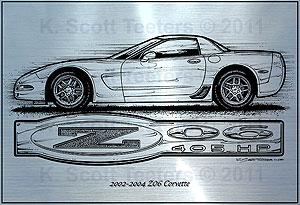
The C5 Z06 was a beautiful balance of a stiff structure, some extra grunt, and vastly improved suspension, brakes, wheels, and tires. The C5 Z06 was an exhilarating car for sure, but not a wildcat at the extreme. There’s an old expression that goes, “You can’t make a racecar into a daily driver.” Well, you “can” but it is typically not a fun experience. After all the brouhaha and drooling over the C6 Z06’s muscular good looks and astonishing horsepower and torque was over, drivers that dared to take their Z06 to the limit were in for a BIG surprise. The reports were consistent – the Z06’s grip and bite were astonishing, but the millisecond you went past the limit, you were in for a violent, shorts-staining experience! The reports also indicated that so long as the driver knows the Z06’s limit, the Z06 could be an excellent GT car.
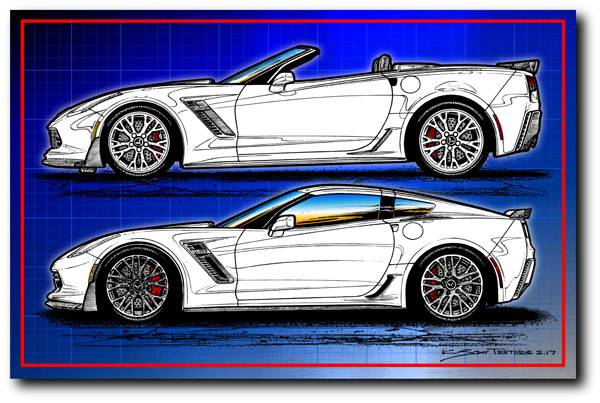
Enter the C7 Z06. The C7 Corvette is already the edgiest Corvette ever made. That is, edgy in the sense that the car’s shape is very, very faceted. Car guy Bob Lutz recently said in one of his Road & Track last page columns, “The new rule in modern car styling is, leave no surface un-faceted.” As an illustrator I can attest to that observation, as when I illustrate a C7 Corvette, there are lots and LOTS of creases, folds, and surface details to draw.
The C7 Z06 takes that faceting to a whole new and higher level. The car’s looks just scream out, “I’m a badass! Ya think you can handle me?” Where the C6 Z06 was a wolf in wolf’s clothing, the C7 Z06 is a monster with marginal manners, delivering world-class performance in the hands of a highly competent driver. I’ll address the “marginal manners” later, but for now, let’s go over the basics.
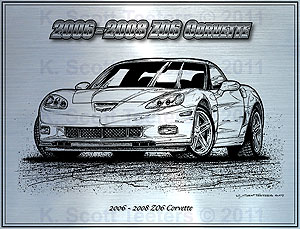
The C5 and C6 Z06 Corvettes were only available in a fixed-roof configuration to maximize overall structural stiffness. Mega-kudos to the Corvette chassis engineers because not only is the C7 Z06 20-percent stiffer than the C6 Z06, the C7 version is for the first time, available as a coupe or a convertible. The 2013 427 Convertible was as close to a C6 “Z06 convertible” as there ever was. Plus, in a break away from Corvette performance model tradition, the C7 Z06 is now available with an eight-speed automatic designed to keep the Z06 in the power band at all speeds.
Track testing of the new Z06 has shown that the automatic version is just a tick quicker than the 7-speed manual-equipped Z06. The case can be argued that on the track, the automatic better enables the driver to stay focused on keeping the car on the best line possible to let the Z06’s 650-horsepower, supercharged LT4 do its job. For traditional gear-jammers, the seven-speed manual transmission has computerized rev-matching that’ll make an average Joe look like Tommy Milner – well, almost.
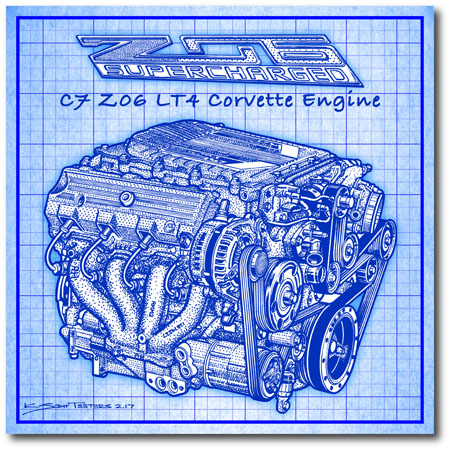
The LT4 engine packs 650-HP, 650 LB/FT of torque (that other horsepower) and includes an Eaton supercharger/intercooler, titanium intake valves, dry-sump oil system, direct injection, continuous variable valve timing, and cylinder deactivation. The C7 Z06 with the Z07 option put the car into the 2-second club for the first time. Chevrolet squeezed the Z06’s 0-60 to 2.95-seconds and the quarter-mile in 10.95 @127-MPH!
The exterior of the Z06 is a perfect expression of the “form follows function” rule. The basic Z06 comes with an aggressive front splitter/wheel arch spats design and the rear spoiler from the Z51 package. The width of the car was determined by the use of the ZR1-sized 10×19 front wheels and 12×20 rear wheels. The body is 2-inches wider in the front and 3-inches wider in the back and the side fender vents are bigger for improved venting. The front grille has two corner scoops to gulp down cool air for the front brakes. The rear top fender scoops have air blades that funnel more air into the differential and transmission coolers. And the rear fender side scoops keep the rear brakes cool. The standard Z06 includes a front splitter, front wheel well opening spats, a unique carbon-fiber hood with a larger vent, and a rear spoiler. The hood has a larger vent to reduce front lift and is taller to cover the Eaton R1949 TVS supercharged/intercooled LT4 engine package that is just 1-inch taller than the base LT1.
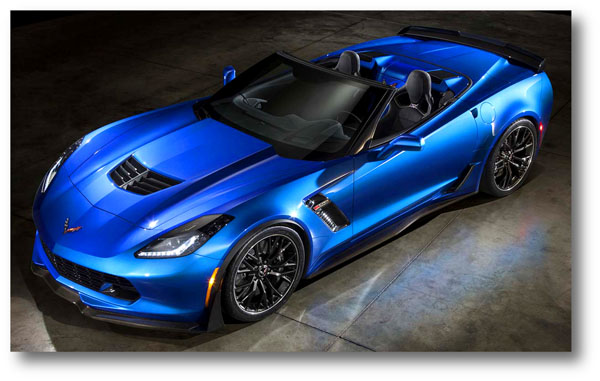
Want more? Who doesn’t? From 2006 to 2010 all C6 Z06s were pretty much created equal. Then from 2011 to 2013 a Z06 could be enhanced with the Z07 Ultimate Performance Package. The Z07 package lives on in the C7 Z06 and includes carbon-ceramic brakes, carbon fiber aero package, revised suspension tune, and (nearly slicks) Michelin Pilot Sport Cup 2 tires. The Aero part of the Z07 package delivers four-times the downforce of that of the standard Z06! The package includes a carbon fiber front splitter, aviation-style winglettes, carbon fiber side rockers, and a larger rear spoiler with a fixed wickerbill. What’s a “wickerbill”? It is a small vertical tab at the edge of the spoiler that seriously increases downforce – not unlike a “trim tab” on the rudder of a large ship.
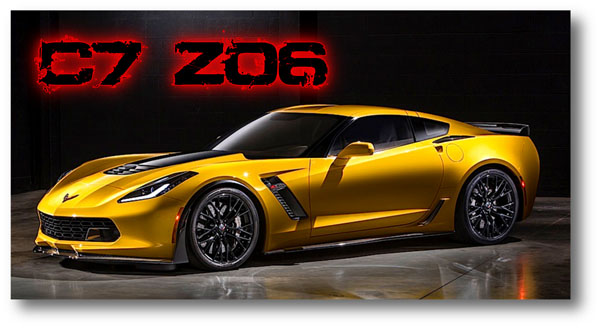
It is wonderful that Corvette engineers are incorporating “downforce” into the ultimate performance option for the Z06, as it is essential to making the Pilot Sport Cup tires work to the max on the track. It’s another one of many spillover technologies from the Corvette Racing program. However, this is not without some sacrifice in top speed.
Even though the C7 Z06 has 650-horsepower (12-ho more than the C6 ZR1) and 650-lb/ft or torque (46 lb/ft of torque more than the C6 ZR1) the C7 Z06’s top speed is officially 185-mph – a full 20-mph less (oh, boo-hoo!) than the C6 ZR1’s 205-mph. That’s how much extra air drag the aero kit creates, but also generates gobs more downforce on those wonderfully sticky Michelin Pilot Sport Cup 2 tires. This is why the C7 Z06/Z07 is the “track car” Corvette.
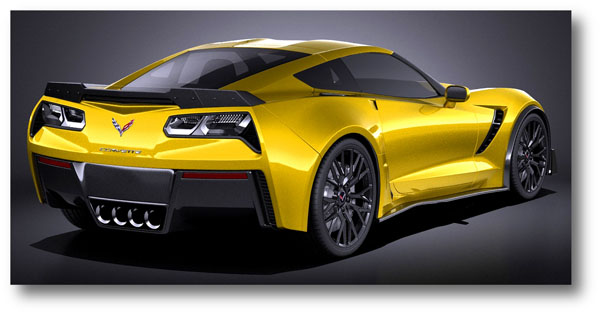
The 2017 Z06 starts at $81.440 (as of early February 2017), but I was able to rack up the total to an astounding $122,380! But you sure do get a ton of cool hardware for your money. A few decades ago you would have had to hire a tuner to max out a Corvette similar to what’s available from the Bowling Green Corvette Assembly plant.
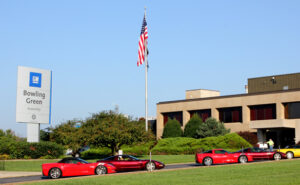
The C7 Z06 is truly a boutique supercar: coupe or convertible, manual or automatic transmission, three levels of trim, three aero packages, and dozens of options. The commonality of all versions is the new widebody, suspension, brakes, and supercharged LT4 engine. The LT4 engine packs 650-HP, 650 LB/FT of torque (you know, that “other” horsepower) and includes an Eaton supercharger/intercooler, titanium intake valves, dry-sump oil system, direct injection, continuous variable valve timing, and cylinder deactivation.
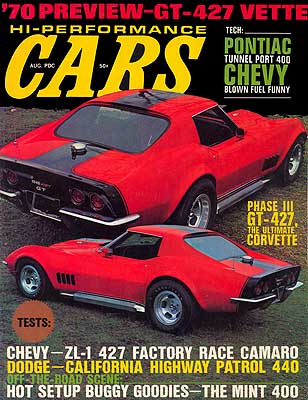
The Z06 has made an amazing journey from an obscure racer kit option to a performance model Corvette that just keeps becoming more and more racecar, yet maintaining all of the standard production C7 creature comforts. A C7 Z06 can be easily worked into a 9-second drag machine without having to gut the car, meaning ALL accessories stay in the car! The 1963 Z06 optioned Corvette was indistinguishable from a regular Corvette, whereas the C7 Corvette is the most “in-your-face” street Vette since the days of the Baldwin-Motion Phase III Corvettes.
Since the debut of the C7 Z06 in 2015, a few truly brave souls (or incredibly dumb individuals) have tried out the C7 Z06 on the track with its electronic traction controls turned OFF. Even with the huge sticky tires, great suspension, and aero package, without the Z06’s onboard computers managing traction and clutch slippage, etc, the car is an untamable beast. This raises an interesting question or two. Are we at the end of the era of “natural” performance cars? You can see Corvette Chief Engineer Tadge Juechter in YouTube videos explaining how computer calibration adjustments during track testing at Nurburgring, Germany were digitally integrated into production Z06 Corvettes before the automotive press had the opportunity to drive the cars.
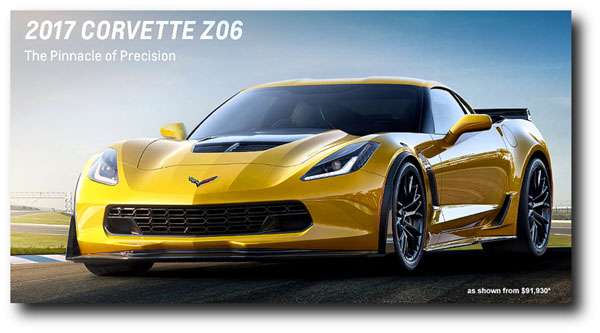
We are now so far over the horizon from when Duntov started with the original Z06, that he couldn’t even see the C7 Z06’s tire smoke. The 2017 Dodge Challenger SRT Hellcat comes with 707-horsepower and we still don’t yet know what will power the C7 ZR1 and the mid-engine C8. Will Chevrolet goose the new DOHC LT5 up to 750-hp or 800-hp? Will the computerized suspension and traction control system be able to dance with all that power? Maybe the next generation of Pilot Sport Cup tires will be even wider and stickier! When the mid-engine C8 Corvette is released, will there be a Z06 version – do they dare? Is this the last hurrah of insanity before a coronal mass ejection cooks the planet? Or are we at the dawn of the new age of digital ultra-high-performance cars? Maybe Star Wars Speeders aren’t so far, far away. – Scott

PS – We have many C2, C5, C6, and C7 Z06 Corvette canvas posters, canvas wraps, and paper prints available from our Etsy store, HERE!
